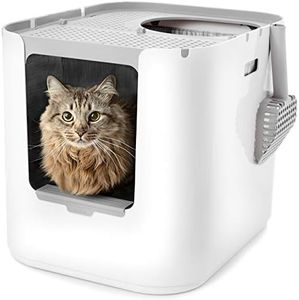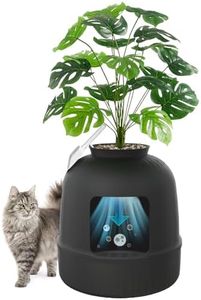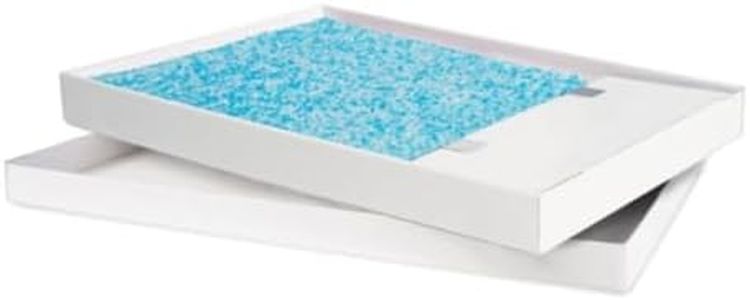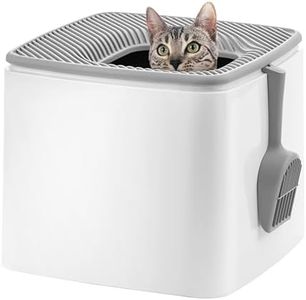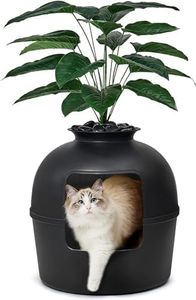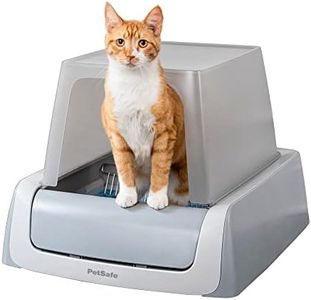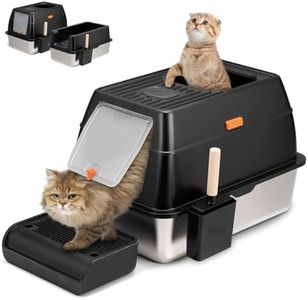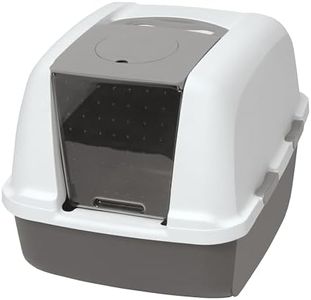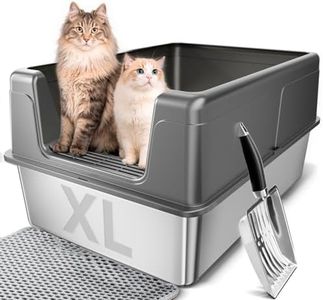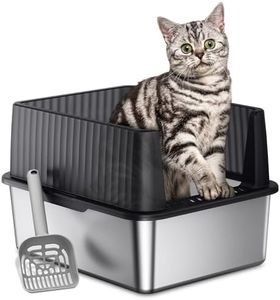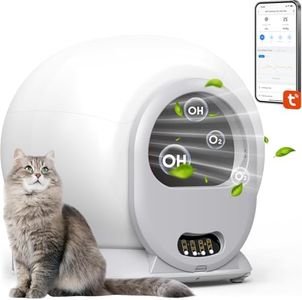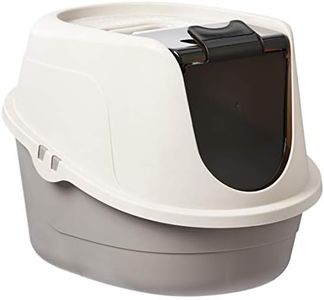We Use CookiesWe use cookies to enhance the security, performance,
functionality and for analytical and promotional activities. By continuing to browse this site you
are agreeing to our privacy policy
10 Best Litter Boxes
From leading brands and best sellers available on the web.Buying Guide for the Best Litter Boxes
Choosing the right litter box is important for both your cat’s comfort and your own convenience. The ideal litter box should be easy to clean, offer enough space for your cat to move around, and help contain mess and odors. When shopping for a litter box, think about your cat’s habits and needs, as well as where you will place it in your home. Paying attention to various features will help you narrow down the best fit for your situation.SizeSize refers to the overall dimensions of the litter box. It’s important because cats generally prefer roomy spaces for elimination, and a box that's too small may discourage use. Small boxes work for kittens or petite cats, medium is suitable for average-sized adult cats, while large and extra-large boxes are better for bigger or multiple cats. Consider your cat’s size and whether they tend to scatter litter when choosing the right size.
Type (Open vs. Covered)Litter box type describes whether the box is open (uncovered) or covered (enclosed with a lid). Open boxes are easier for cats to access and for owners to clean, but may allow more odor and litter to escape. Covered boxes provide more privacy and better odor containment, but can also trap smells inside and may be uncomfortable for larger or claustrophobic cats. Your cat’s personality and your preference for odor control should help you decide.
Entry HeightEntry height is the distance from the floor to the top of the opening where your cat enters the box. Low entry is easier for kittens, elderly cats, or cats with mobility issues. Higher entry helps contain litter but might be tough for less agile cats. Choose a height that matches your cat’s physical ability and behavior.
Self-Cleaning FeatureA self-cleaning litter box automatically removes waste, which means less scooping for you. These can be convenient, but tend to be larger and require electricity or special supplies. Some cats may be startled by the mechanisms or noise. Self-cleaning is a good option if you have a busy lifestyle, but only if your cat is comfortable with it.
Material and CleanabilityMost litter boxes are made of plastic, and cleanability refers to how easy it is to remove litter and wash the box. Smooth, seamless surfaces are easiest to clean and help prevent odors from building up. Avoid boxes with too many corners, ridges, or complicated shapes if you want to reduce cleaning time. Pick a litter box you can easily rinse, scrub, and dry.
Odor Control FeaturesSome litter boxes include odor control features like carbon filters or antimicrobial coatings. These can help keep smells in check, especially in smaller living spaces. The effectiveness varies, so consider if you are sensitive to odor or unable to scoop as frequently, then prioritize these features for more comfort.
Liner CompatibilityLiner compatibility means whether or not the box is designed to work with disposable or reusable liners. Liners make cleaning easier and can protect the box from stains. Some boxes have clips or smooth sides to hold liners in place, while others may not accommodate them well. If you prefer using liners for convenience, look for a box that specifically mentions this feature.
